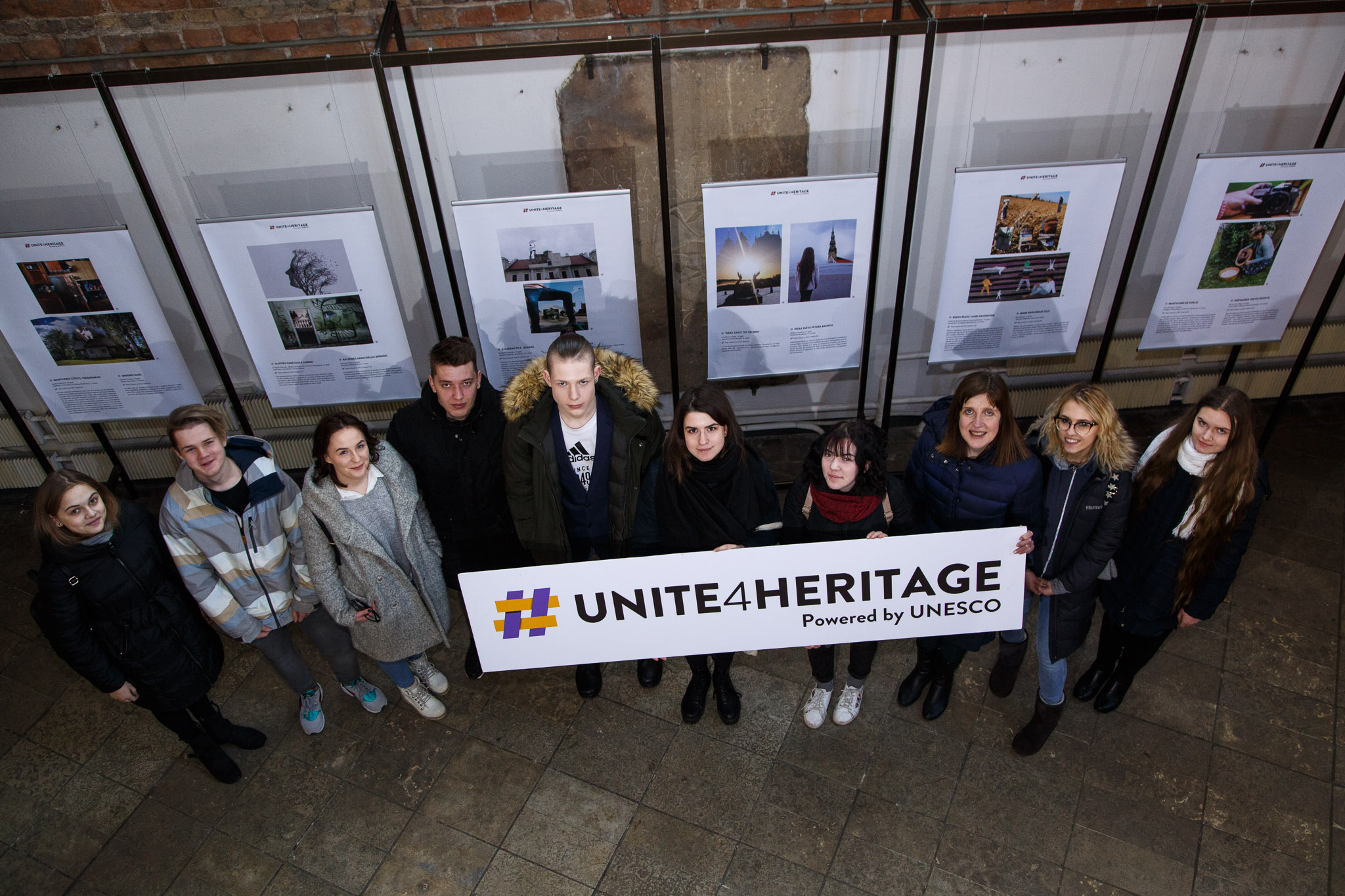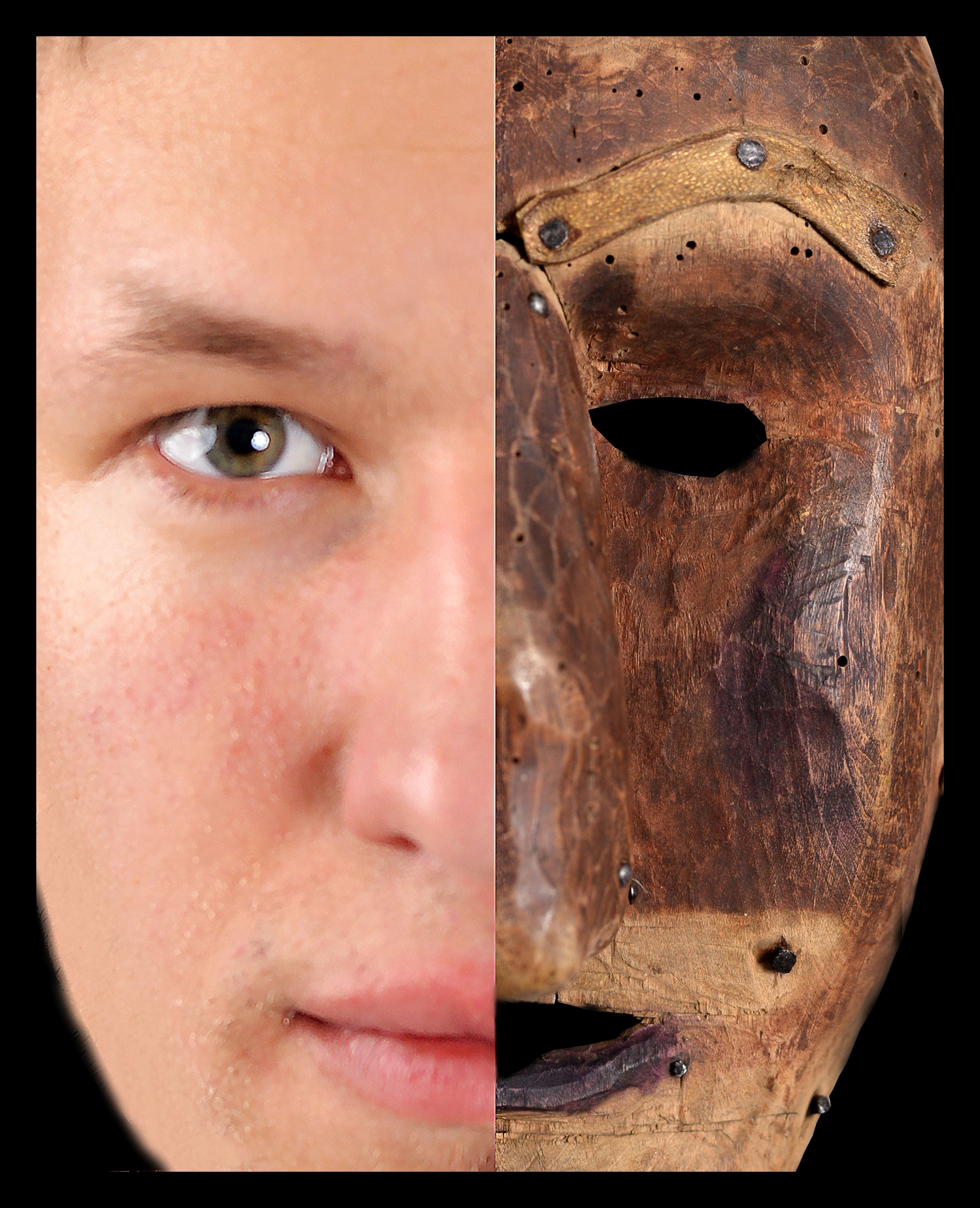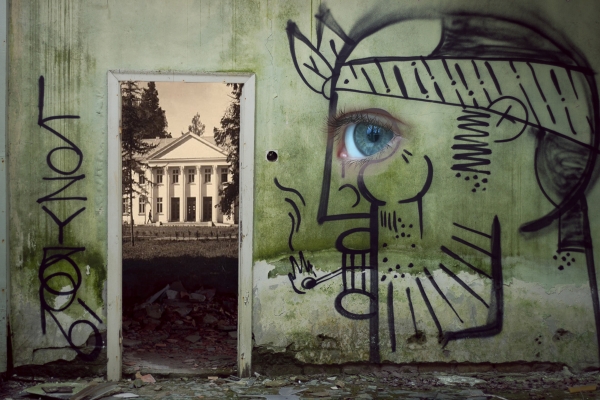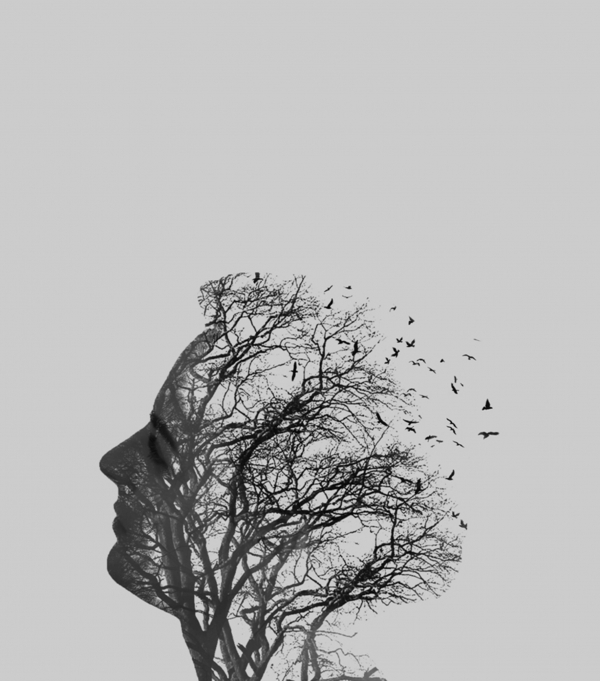Heritage through the eyes of teenagers: Exhibition "Story of Heritage – It's my Story and it's your Story” opens at Riga's St Peter's Church
We are delighted to announce the opening of a new travelling exhibition, "The Story of Heritage - It's my Story and it's your Story" at Riga’s St Peter’s Church in Latvia. Through photographs and collages by 158 schoolchildren across Latvia’s educational institutions, this exhibition explores the significance of cultural heritage in the lives of children and young adults. It originates from an initiative led by UNESCO’s Latvian National Commission in the framework of the movement #Unite4Heritage, whereby schoolchildren were invited to illustrate their personal relationship with cultural heritage through photo-collages as well as to participate in seminars and workshops about heritage.
The exhibition is the result of a joint effort between UNESCO’s Latvian National Commission, Lielvards –a Latvian educational enterprise– and several cultural institutions including the National History Museum of Latvia, the State Inspection for Heritage Protection and the National Library of Latvia. This project is financed by the Ministry of Culture of the Republic of Latvia and is part of the European Year of Cultural Heritage.
While fostering artistic creativity, "The Story of Heritage - It's my Story and it's your Story" exhibition explores how issues of tradition, continuity and identity inform children’s memories and personal stories. For example, one of the participants –18-year-old Luize Ore studying at Kuldiga Technology and Tourism Technical School in west Latvia– describes how she is constantly inspired by the history of her school, accommodated in a grand building from the late 19th century. She portrays herself against an old black-and-white image of her school and a new one, a juxtaposition that boldly illustrates her relationship with the historical baggage of the place. On the other hand, for 16-year-old Marta Liva, heritage is embodied in a cake recipe that has been handed down from one generation to the next for decades. Nils Klaverī, 10 years of age and perhaps the youngest among all the participants, reflects on his own experience with Latvian folk traditions. An assortment of different colours and patterns, his tapestry-like design alludes to Latvian band weaving heritage.
The underlying message is one of urgency and concern: cultural heritage is under threat. As citizens of the world we all have a primary obligation to cherish and protect it.
"The Story of Heritage - It's my Story and it's your Story” will be on display at Riga St Peter’s Church (Reformācijas laukums 1, Rīga, LV – 1050) from February 22nd to March 23rd before making its way to a number of schools and educational centres across Latvia.

For more information about the exhibition and the initiative: www.darini.lv
Inspiration

Ethnography
The idea behind the Latvian traditional masks and the related practices was based on my own personal experience from masking events. It started at a young age when I was a kid, while staying in my grandmother house on Vidzeme countryside during the school holidays in Winter. The characteristic gypsy style rumblings were willingly anticipated every year with the feelings of excitement. A few years later, these events were enriched by my participation in various yearly festivities and family celebrations, particularly weddings which were accompanied by cultured masking walks that took place in Riga and near the city. This experience was also widened by watching the masking festivals and celebration both in Latvia and abroad.
A gap of several generations is what keep us apart from the existence of common and active masking festivals. The traditional mask walks had a significant place in the national culture at the end of 19th and the beginning of 20th century. However, even in later years, despite the rather strict frames of religious our secular government structures the line of masking traditions continued and it still is a living phenomenon even in the current cultural environment. This attracts the attention of researchers and allows us to notice the presence of ''the Other'' in the wider context of European culture. The researchers of European masking cultures propose that masking is nothing more than what remains of ''primitive'' and ''pagan'' cultural systems. Nevertheless, current anthropological studies tend to look for the meanings of masking practices in sociological and symbolic contexts, where it can be observed. Masking traditions show us that there is an abundance of certain pre-Christian customs and attitudes along the European cultural mainstream which are still being practiced.
By Jānis Šabanovs – Head Curator of the Ethnography Department at The National History Museum of Latvia.
Examples of works on display

The Essence of Old Times by Luīze Ore, aged 18 (Kuldiga Technology and Tourism Technical School) Member of the UNESCO Associated School Network.
“It has been three years since I started my studies at the Kuldiga Technology and Tourism Technical School, where I study the profession of tourism consultant. At the end of 19th century / beginning of the 20th century this building hosted The Baltic Teachers' Association where teachers were educated for teaching in the folk schools of the Baltic region. In 1998 the building was given the status of cultural monument of national significance, thus the school building does not have any plastic windows, plastered walls or laminate floors. At first, I didn't really like it, but now I am used to this, because you can feel the essence of antiquity all the way through the building. When I walk along these passageways today I think of all those important Latvian personalities who also walked through them many years ago. This heritage is close to me because it helps to shape my future and achieve my goals."

The Wonder of the Baldone Sanitarium by Patricija Pruse, aged 13 (Art School of Baldone)
“I made this work interesting and extraordinary, because it seems that you can find a lot of exciting things in the abandoned Baldone Health Resort which you can't find anywhere else. I do not want it to be demolished because I think this is a very important place for Baldone's history. I would like to see it renovated or turned into a museum.”

Floating Through the Oak Trees by Kintija Krūzberga, Jēkabs Černuho, Niks Norens Rozenbergs, aged 18, Ozolnieki Secondary School. Member of the UNESCO Associated School Network.
"Here is a moment of intimacy, happiness and a breath of culture that gives us the opportunity to live life more passionately. The oak tree not only bears its strength in its roots, but also in our growth, finding its way through the heart of the Ozolnieki Secondary School. Here we give a broader name to the nation, its heritage and culture. Each oak tree can show us how to grow further and breath deeper. With all our spirit we love to be here where the grass is greener, happiness is wider and, in a village surrounded by oaks, every person is close and dear to us."

Step from the Coloured Roof by Annija Tīna Kukuka, aged 16, Ādaži Secondary School.
"My aim was to show a piece of our culture that includes different variations of colours. Opera and especially ballet means a lot to my family so I decided to create sound waves that resemble the brush flow on paper, like a dance of cultural heritage. Why - ''a step from the colored roof''? Because I chose to take risks with colours, to use a different approach, as well as a vision of something essential."

